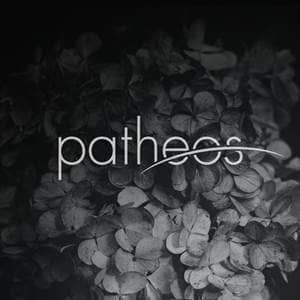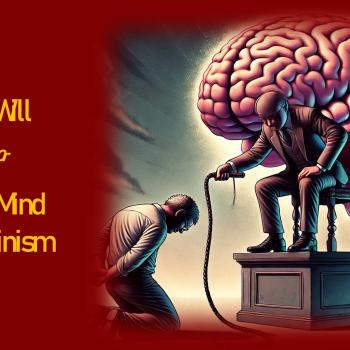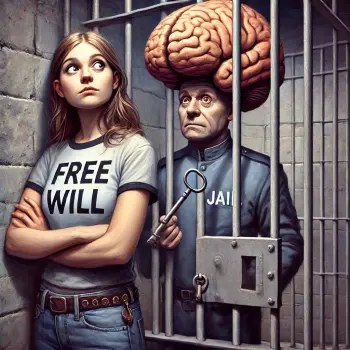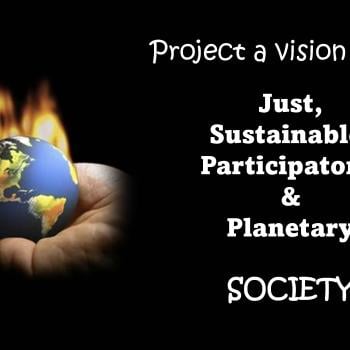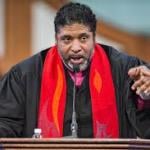Consciousness and Neuroscience in a Physical World SR 2005
Brain and Self? Did I lose my self to my brain?
5 Models of the Human Self to Consider
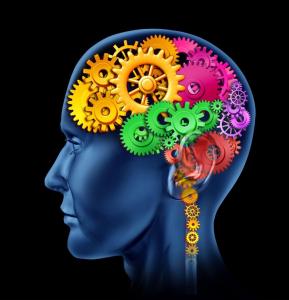
What is the relationship between brain and self? Did I lose my self to my brain? How should we describe the relationship between brain and self? Is the brain real while the self is unreal? Am I living in a delusion?
The Buddhists have long told us that we do not have a self (anatta in Pāli or anātman in Sanskrit).[1] What we think is our self is, in fact, a delusion. Buddhists ask us to realize the truth of anatta, no-self.
Today there is ferment over brain and self in our universities. Are our contemporary brain scientists conspiring with the ancient Buddhists? Is this thing we think of as a self only a smoke puff covering an underlying fire of neuronal firings? Are we “nothing but a pack of neurons,” as geneticist Francis Crick says? (Crick 1994, 3). Neurons? Yes. Self? No.
I miss my missing self. But, then, if there is no “I” to miss anything, why should this bother me? I think I’m going to get a head ache.
Here’s our question: brain and self?. What’s the relation? In this Patheos post on public theology, let’s ask: did I lose my self to my brain?
Did I lose my conscious mind to Science?
Did I lose my Free Will to Science?
Did I lose my Inborn Sense of God to Atheism?
Did I lose my Self to my Brain?
Did I lose my Self to Determinism?
Did I lose my Self to Christian Freedom?
Free Will as Self-Determination
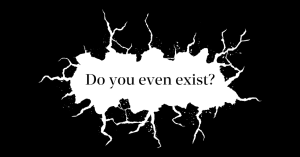
In this Patheos series on the implications of neuroscience and neurocentrist philosophy, I have been contending that what we experience in the exercise of our free will is agency.[2] Agency takes the form of deliberation, decision, and action. First, we deliberate over alternatives. Second, we decide which alternative to actualize. Then, third, we take action which has an effect on the physical world. Our conscious decision affects the course of physical history. The physical world has been changed to some degree by your or my self as an agent. That is the sum and substance of free will.
But materialist thieves want to break into our consciousness and steal our free will. More than that! They also want to steal the very self that engages in self-determination. How might we defend ourselves? If we dial 9-1-1, will the thought police come to our rescue?
Materialist thieves are coming to steal our self
Once the thieves have stolen our self, they plan to fence it to the brain. The brain takes our self, leaving nothing to us.
One thief coming through the window is German neuro-philosopher Thomas Metzinger. Recall in an earlier post we cited Metzinger saying, “Subjective experience is a biological data format, a highly specific mode of presenting information about the world by letting it appear as if it were an Ego’s knowledge. But, no such things as selves exist in this world” (Metzinger 2009, 8). What! The very self—my self—who is writing this Patheos article does not exist! Nor does your self—the self who is reading this article—exist either. Can that be right?

American neurocentrist philosopher, Patricia Churchland, goes a little easier on us. Like Metzinger, she holds that the physical brain is in charge of our mind. Yet, Churchland concedes that our self at least seems real. “The brain makes us think that we have a self,” she writes. “Does that mean that the self I think I am is not really real? No, it is as real as any activity of the brain. It does mean, however, that one’s self is not an ethereal bit of soul stuff” (Churchland 2003, 124). As a scientific materialist, Churchland wants to rid the world of everything ethereal. Souls or minds or selves are too ethereal. So, she eliminates them.
Yet, I still want to ask Churchland: is the self real or not? Maybe she means to tell us that the self is a real delusion. Is that enough reality for you?
Both Metzinger and Churchland deny that a self as a mental entity–as an ethereal substance–exists. What, then, is the relation between brain and self? One exists. The other does not. Did I get that right?
The Hard Problem: The Explanatory Gap between Brain and Self
We need to understand why these robbers feel the urge to steal our selves. Let’s have some sympathy for the materialist thieves, because they confront a hard problem.
Let’s call it the Hard Problem or the Explanatory Gap.[3] A gap opens up when one attempts to explain exhaustively first-person subjective experience in terms of third person objective science. This is a hard problem, says philosopher Michael Tye, because…
“no matter how deeply we probe into the physical structure of neurons and the chemical transactions which occur when they fire, no matter how much objective information we come to acquire, we still seem to be left with something that we cannot explain, namely, why and how such-and-such objective, physical changes, whatever they might be, generate so-and-so subjective feeling, or any subjective feeling at all.”
We think of this as a hard problem because subjective self-consciousness resists being reduced to objective explanation, just as mental events resist being reduced to physical processes.
What we’re calling thievery here takes place when neurocentrists prematurely resolve the hard problem by eliminating the subjective self.
The Really Hard Problem: Meaning in a Meaningless Material World

The neuroexistentialists add to the hard problem a second challenge, the Really Hard Problem. Gregg Carusso and Owen Flanagan describe the really hard problem as “the special problem for those of us living in the age of brain science of making sense of the nature, meaning, and purpose of our lives given that we are material beings living in a material world” (Flannagan 2018, 9). We poor saps. The materialist thieves have stolen our consciousness, our free will, and even our very self. Now bereft of these precious ethereal properties, they condescend to comfort us with materialist meaning and purpose for our lives.
Thanks, but no thanks. I don’t want grief counseling. I think I’d just rather get my self back.
Five Models of the Self
We’ve been asking about the relationship between brain and self. Now, let’s ask: just what is this self that the materialist thieves have taken away? Just what kind of self do we want returned? And, what might a public systematic theologian have to say about the relationship between our self and God? (Peters, 2023, chapters 28,30).
-
Self Model One: Ego Continuity
Model One: Ego Continuity. We know ego continuity in religious tradition as the Soul. This model belongs to the school of substance dualism. According to Plato and Descartes, the physical body is one substance and the ethereal soul or mind is a second substance. Today’s scientific materialists believe there is only one substance, namely, the bodily world.
In his Meditations, Marcus Aurelius says, “it is not the body, nor the personality that is the true self. The true self is eternal. Even on the point of death we can say to ourselves, ‘my true self is free’. I cannot be contained'” (Aurelius 2002, Book 2).
According to the doctrine of the immortal soul, the self is structured by a persistent self-awareness. The traditional Western doctrine of the immortal soul relies on ego continuity in this life and the next, despite what happens to the physical body. The idea of ego continuity makes Patricia Churchland shudder.
Belief in a substantial or immortal soul distinguished from the body is brutally rejected in today’s scientific, philosophical, and even theological circles. “No one should take seriously the Cartesian myth of the ghost in the machine,” exclaim Caruso and Flanagan (Flannagan 2018, 2). Even Pope Benedict XVI, formerly Joseph Cardinal Ratzinger, concurs that the soul should not be thought of as an immortal substance. “The challenge to traditional theology today lies in the negation of an autonomous, ‘substantial’ soul with a built-in immortality, in favor of that positive view which regards God’s decision and activity as the real foundation of a continuing human existence” (Auer 1988, 145). Any promise of life beyond death would entail divine action. It would not be the result of an immortal soul made out of an ethereal substance.
-
Self Model Two: Confused Higher Self

Model Two: the human Self as Confused Expression of a Higher Self. The higher self or nous belongs on a level with the divine mind in the Plotinian tradition. It is transtemporal or even eternal. But, because your and my soul’s life is temporal, our daily self falls away from awareness of eternity in a recurrent downward movement that makes our encounter with eternity multiple and episodic. Our higher self beckons our daily self to come up hither to sustained transtemporal consciousness.
New Age guru Barbara Marx Hubbard listens to the voice of her higher self. “We may call that presence by many different names–the voice of the Higher Self, the inner guide, the Christ. If we give that inner voice our full attention, if we recognize it as our deep Self, then a momentous evolutionary change occurs. Gradually we find that we are no longer a local personality seeing the divine. Rather we become an incarnation of the divine…I call this the shift from ego to essence” (Hubbard 2005, 10-11). Rather than the mere persistence of an immortal soul beyond death, Hubbard’s temporal self becomes absorbed into a higher perhaps even eternal self.
According to the doctrine of the higher self, our individual soul is but a manifestation of the over-soul, the spiritual reality that unites all things. Plato and Plotinus sought recognition of the world soul present within the individual soul. In Advaita (non-dualism) Hinduism, the self (atman) recognizes its higher unity and dissolution in the All (Brahman). We find this model of the self in the American Transcendentalists of the nineteenth century and New Age Spirituality in the late twentieth century. The doctrines of the higher self and the world soul are metaphysical concepts.
-
Self Model Three: Self-as-Delusion
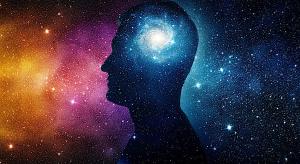
Model Three: Self-as-Delusion. This is the model elected by brain-mind identity theorists, neurocentrists, and eliminative materialists. One science writer describes self-as-delusion this way: “neuroscientists increasingly describe our behaviour as the result of a chain of cause and effect, in which one physical brain state or pattern of neural activity inexorably leads to the next, culminating in a particular action or decision. With little space for free choice in this chain of causation, the conscious, deliberating self seems to be a fiction” (Jones 2011, 32).
Now, “delusion” or “fiction” might be too harsh. It might be more accurate to say that what we think of as our self is actually a representation of brain processes. Our self reflects our brain, so to speak. Our self models our brain, so to speak.
“The self-model is therefore nothing but an inner model as the integrated and summarized version of your own brain and body’s information processing. The self is here thus a mere model of the own body’s and brain’s processes. The self, e.g., the self-model, consists then in nothing but a special form of representation.” Source: (Northoff 2013).
What we experience as a self is a model of the brain, according to the self-as-delusion model. Our propensity to treat the model as something real is what makes the self-model into a delusion or fiction.
What is the implication? If no self exists, then freedom understood as self-determination becomes a delusion, a meaningless farce. Did Shakespeare get it right? Life is “full of sound and fury, but signifying nothing.”
-
Self Model Four: Self-as-Story
Model Four: the Self-as-Story or Self-as-Narrative or Self-as-history. “My sense of self depends upon memories and continued experiences of those in relation to whom I am defined,” writes Australian theologian John Puddefoot. “Deny me access to those memories and those others, and my sense of self would quickly dissolve” (Puddefoot 2002, 133).
According to the story model, the self is an evolving social construction whose identity is defined by our history or biography. For a historical or biographical self to develop, it requires relationship, a set of relationships over time. Do you really want to know who I am?” asks Jennifer Ouellette. “Let me tell you a story” (Oulette 2014, 282).
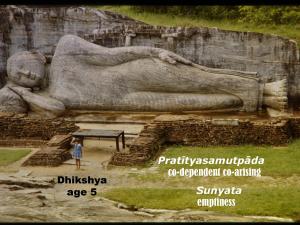
More. The story self is the eschatological self, according to the late Wolfhart Pannenberg. “Our personal identity is bound up with the unique and unexchangeable history of our individual life, and that is preserved in the event of our death only in God” (Pannenberg 2002, 8). What is decisive here is that you and I are not alone in telling our story during our own lifetime. God tells and retells ours story in light of the history of the entire creation. Your and my story does not come to its completion until the last day, the advent of the new creation replete with our resurrection into the everlasting kingdom of God.
When we compare the third and fourth models, we note that for the Self-as-Delusion model the self is a fiction in the sense that it does not exist, whereas for the Self-as-Narrative model the self is a fiction in the sense that it is a construction. A Buddhist might observe, “yes, indeed, we each own a constructed narrative self—a story we tell ourselves–that is temporal and changing in character. But, is it ultimate? Is it eternal?” No, of course not.
Oh, but it is eternal, a Christian might add. Andrea Vestrucci, when explicating Luther’s grasp of the bound will and free will, relies on such a story model. “There is a story,” Vestrucci avers, and each of our stories is embedded in divine grace. “Life is the freedom of having meaning under God’s grace as the unity and origin of all stories” (Vestrucci 2020, 296). The self-as-story told as a narrative is a meaningful story, because it is oriented toward the pursuit of the good. God’s grave provides the good even if our own pursuit falls short.
– Self Model Five: Experiential Self
Model Five: the Self as Experiential Dimension. This is the phenomenological understanding of the human subject. Here, “the self is claimed to possess experiential reality, is taken to be closely linked to the first-person perspective, and is, in fact, identified with the very first-person givenness of the experiential phenomena,” according to Dan Zahavi, who directs the Center for Subjectivity Research at the University of Copenhagen (Zahavi 2008, 106). To be a self is a hard-core common experience so fundamental that it cannot be doubted. “I think, therefore, I am,” we remember Descartes for saying. The experiential model of the self is superior to the self-as-narrative, contends Zahavi.
 Zahavi follows in the footsteps of Edmund Husserl and Martin Heidegger, wherein the self or ego is that which understands itself pre-linguistically and pre-objectively as imbedded in the world. When consciousness-of intends an object, this experience presupposes a subjective ego who is intending that object. Consciousness requires a self to be self-conscious—treating the self as an object of consciousness–according to this model. The self is a self to itself.[4]
Zahavi follows in the footsteps of Edmund Husserl and Martin Heidegger, wherein the self or ego is that which understands itself pre-linguistically and pre-objectively as imbedded in the world. When consciousness-of intends an object, this experience presupposes a subjective ego who is intending that object. Consciousness requires a self to be self-conscious—treating the self as an object of consciousness–according to this model. The self is a self to itself.[4]
The phenomenal-self and the story-self overlap. When we become conscious of our self as a self, what we think of is our own story, our own biography with its past and future. According to evolutionary anthropologist Terrance Deacon, the human self emerged over time and, further, continues to change over time. “Selves evolve, selves develop, selves differentiate, and selves change. This takes time” (Deacon 2012, 464). Each of us as a self can tell our own life story, revealing the dynamism of selfhood.
Special attention to Self-as-Story and the Experiential Self
From this list of five models, I recommend the constructive theologian give special attention to models four and five. The fifth, the experiential dimension model, combines well with the fourth, the story or narrative model. Phenomenologically, the human self exists intuitively, indubitably, and unquestionably at the level of presupposition. This experiential self gains self-confidence and character through narrative formation—through memory and anticipation–as well as through linguistic self-reference.
Paul Tillich‘s disciples could benefit from model five, the phenomenal self. “A self is not a thing that may or may not exist; it is an original phenomenon which logically precedes all questions of existence” (Tillich 1951-1963, 1:169). By no means is this a retreat into individualism. The self is always person-in-relationship. “The self without a world is empty; the world without a self is dead” (Tillich 1951-1963, 1:171).
The basic challenge is this: do models four and five stand stable when shaken by neurocentrist seismic tremors? I believe they do. Both models are ostensive, obvious, and fundamental to experience. If it were not for the prior existence of the subjective self of the neuroscientist, we would not have the product of brain research to ponder. Perhaps it’s worth retrieving Descartes here: I think, therefore, I am (Cogito ergo sum). Even without appeal to substance dualism, phenomenologically self-consciousness demonstrates that I am and you are.
Neuroscientists and neuro-philosophers, it would seem to me, should try to explain our daily experience with selfhood and free will, not explain it away.
The Self as Historical and Eschatological
When we turn to systematic theology proper, I believe the public theologian will be attracted especially to model four, the self-as-narrative or self-as-history model. Who we are is constructed out of our life’s story, our history, our destiny.
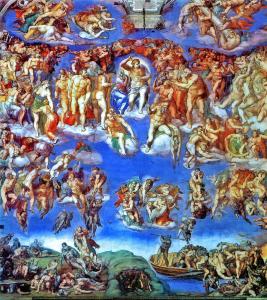
It is our particular history that individuates us in relation to all that surrounds us. “History is the principium individuationis,” writes Wolfhart Pannenberg; “History as a formative process is the way to the future to which the individual is destined….only through anticipation of this [God’s] future can human beings presently exist as themselves” (Pannenberg, Anthropology in Theological Perspective 1985, 527).
Or, “We have our self, our identity, only in anticipation of the totality of our life” (Pannenberg, Systematic Theology, 3 Volumes 1991-1998, 3:561).
You and I as a self are temporal, relational, developmental, and future oriented. Despite the sense of autonomy we feel, the self is not itself self-grounding. Only God as the person’s destiny grounds the self. Only our relation to God provides the person with full quiddity. And this final identity or essence is provided by God only eschatologically, at the completion of our historical story.
Who we are today is defined not only by the accumulation of past experiences but also by our future destiny. And by our present anticipation of that destiny. In fact, God’s eschatological finalization of our personhood retroactively influences us today as we anticipate it. The whole story, including its eschatological consummation, determines who we are as a person, a self.
This is the claim of the Christian public theologian. It’s truth is not dependent on wide spread cultural acceptance. Yet, it is materially decisive for theological anthropology.
Why is defense of the self important?
The human self is the location where divine transcendence comes to awareness. God cannot be seen by microscopes or telescopes. God is not one object among others that can be objectively circumscribed, described, or prescribed.
Here is sociologist of religion, Robert N. Bellah.
“Reality may be encountered in the self as well as in the external world….The heights and depths of the inner life have been among the central realities of religious men in many times and cultures. The overwhelming reality of the inner life precludes any simple use of the word ‘subjective’, as though the inner life were less ‘real’ than external things. Above all the inner life is not a matter of personal whim or simple control of the ego. It is precisely its constraining nature, its objectivity, which makes it a vehicle for transcendence” (Bellah 1970, 198).
The theologian has a stake in defending the self from neurocentrist thieves who would fence it to the brain. According to the theologian, your and my subjectivity makes the self a vehicle for transcendence. Included in our experience of transcendence is a divine promise: God promises to ontologize and hypostasize our self so that we can live everlastingly in God’s kingdom.
Brain and Self? Conclusion
Those thieving scientific materialists have tried to steal the human self and leave us with only the neuronal firings of brain synapses. In its place, the thieves want to leave us with only an only an epiphenomenon, a chimera, a delusion.
When it comes to the relationship of brain and self, our laboratory researchers have disregarded an important factor. What is that factor? God.
God has a story. God’s story is in part integrated with the story of the universe, a story that includes the narrative of your life and my life as selves within cosmic history. Yes, right now your or my self-as-story might be only epiphenomenal. But, your and my story does not end with the death of the brain. It continues. God has promised to tell and retell your and my story everlastingly.
▓
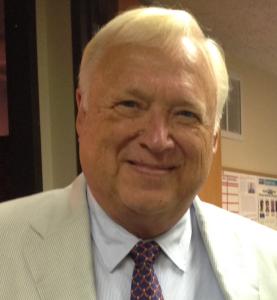
Ted Peters pursues Public Theology at the intersection of science, religion, ethics, and public policy. Peters is an emeritus professor at the Graduate Theological Union, where he co-edits the journal, Theology and Science, on behalf of the Center for Theology and the Natural Sciences, in Berkeley, California, USA. His book, God in Cosmic History, traces the rise of the Axial religions 2500 years ago. He previously authored Playing God? Genetic Determinism and Human Freedom? (Routledge, 2nd ed., 2002) as well as Science, Theology, and Ethics (Ashgate 2003). He is editor of AI and IA: Utopia or Extinction? (ATF 2019). Along with Arvin Gouw and Brian Patrick Green, he co-edited the new book, Religious Transhumanism and Its Critics hot off the press (Roman and Littlefield/Lexington, 2022). Soon he will publish The Voice of Christian Public Theology (ATF 2022). See his website: TedsTimelyTake.com. His fictional spy thriller, Cyrus Twelve, follows the twists and turns of a transhumanist plot.
▓
Notes
[1] “Buddhist’s call the concept of self Ātman, which is part of the default experience of being human. That belief system also considers it to be a delusion. Even it is, it is a stubbornly resolute one. For most of us, it certainly feels like our sense of self is real.” Source: (Feehley 2022).[2] “We have experience and are conscious of the world. Who though is conscious? This is the subject or self of experience. While in the past the concept of self has been matter of philosophical discussion, psychoanalysis shifted it into the domain of psychology where it surfaced as ego. More recently, brain imaging allows to investigate the neural mechanisms underlying our subjective experience of a self.” Source: (Northoff 2013).
[3] For the nuances of the Hard Problem, see the debate in Nova et Vetera. Bas C. von Fraasen, “How Can We Understand Transcendence of the Ego?” Nova et Vetera, English Edition, 17:2 (Spring 2019) 373-389; and Ted Peters, “The Transcendence of the Self in Light of the Hard Problem: A Response to Bas van Fraassen,” Nova et Vetera, English Edition, 17:2 (2019) 391-400.
[4] “Phenomenological philosophers such as Zahavi describe as ‘pre-reflective self-consciousness’. The concept of pre-reflective self-consciousness contains two main terms, ‘pre-reflective’ and ‘self-consciousness’. Pre-reflective means here that the experience of the self does not stem from any reflection or cognitive operation. Instead it is already always there as part of our experience such that we cannot avoid it. The self is thus pre-reflective. It is simultaneously an inherent part of our experience and thus of our consciousness.” Source: (Northoff 2013).
References
Auer, Johann, and Joseph Ratzinger. 1988. Eschatology: Death and Eternal Life. Washington DC: Catholic University of America.
Aurelius, Marcus. 2002. Meditations. New York: Modern Library.
Bellah, Robert, 1970. Beyond Belief. New York: Harper.
Churchland, Patricia. 2003. Brain-Wise: STudies in Neurophilosophy. Cambridge MA: MIT Press.
Crick, Francis. 1994. The Astonishing Hypothesis: The Scientific Search for the Soul. New York: Scribners.
Deacon, Terrence. 2012. Incomplete Nature: How Mind Emerged from Nature. New York: W W Norton.
Feehley, Conner. 2022. “Brain Scientists Probe the Mechanisms Behind Self-Identity.” Discover https://www.discovermagazine.com/mind/brain-scientists-probe-the-mechanisms-behind-self-identity.
Flannagan, Owen, and Gregg Caruso. 2018. “Neuroexistentialism: Third-Wave Existentialism.” In Neuroexistentialism: Meaning, Morals, and Purpose in the Age of Neuroscience, edited by Gregg D Caruso and Owen Flanagan, 1-22. Oxford: Oxford University Press.
Griffin, David Ray. 1998. Unsnarling the World-Knot. Berkeley CA: University of California Press.
Hubbard, Barbara Marx. 2005. “Bringing God Home.” In Healing Our Planet; Healing Our Selves, by eds Dawson Church and Geralyn Gendreau, 9-18. Santa Rosa CA: Elite Books.
Jones, Dan. 2011. “The Free Will Delusion.” New Scientist 210: 2808 32-35.
Metzinger, Thomas. 2009. The Science of the Mind and the Myth of the Self. New York: Basic.
Northoff, Georg. 2013. “Brain and Self–A Neurophilosophical Account.” Child and Adolescent Psychiatry and Mental Health 7 (28): https://capmh.biomedcentral.com/articles/10.1186/1753-2000-7-28.
Oulette, Jennifer. 2014. Me, Myself, and Why: Searching for the Science of Self. New York: Penguin.
Pannenberg, Wolfhart. 1985. Anthropology in Theological Perspective. Louisville KY: Westminster John Knox.
—. 1991-1998. Systematic Theology, 3 Volumes. Grand Rapids MI: Wm B Eerdmans.
Pannenberg, Wolfhart. 2002. “The Task of Christian Eschatology.” In The Last Things: Biblical and Theological Perspectives, by eds Carl E. Braaten and Robert Jenson, 1-13. Grand Rapids MI: Wm. B. Eerdmans.
Peters, Ted, 2023. The Voice of Public Theology. Adelaide: ATF.
Puddefoot, John. 2002. “The Last parochialism? Artificial Life, Intelligence and Miknd: Some Theological Issues.” In God, Life, Intelligence and the Universe, by eds Terrence J Kelly and Hilary D Regan, 111-140. Adelaide: ATF.
Tillich, Paul. 1951-1963. Systematic Theology. 1st. 3 Volumes: Chicago: University of Chicago Press.
Vestrucci, Andrea. 2020. “Recalibrating the Logic of Free Will with Martin Luther.” Theology and Science 18.3 358-382.
Zahavi, Dan. 2008. Subjectivity and Selfhood. Cambridge MA: MIT Press.






